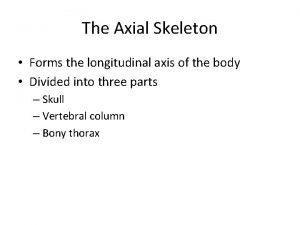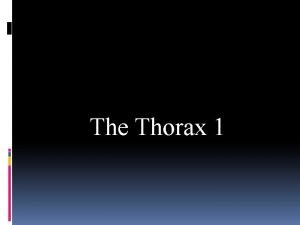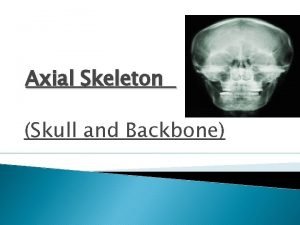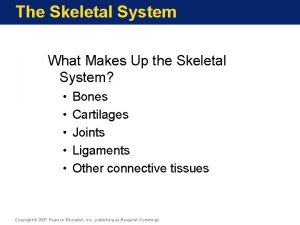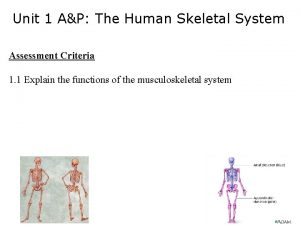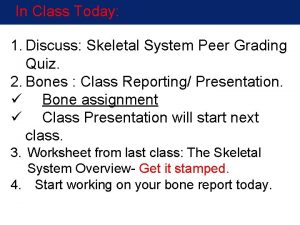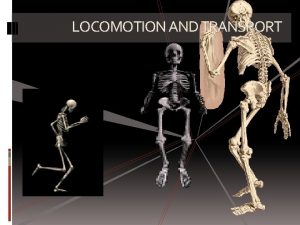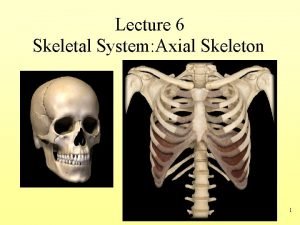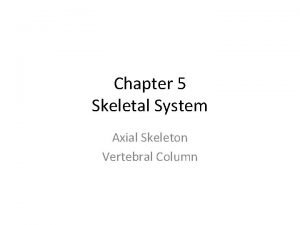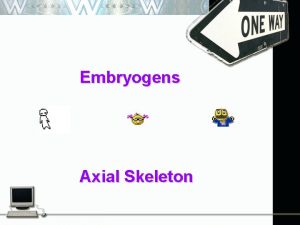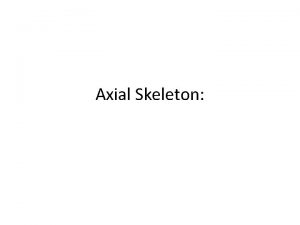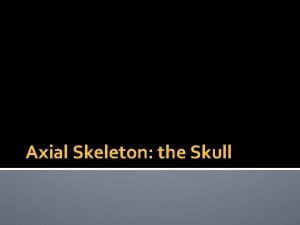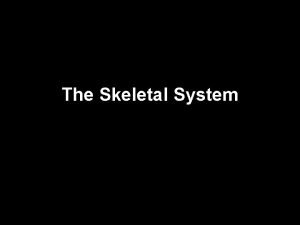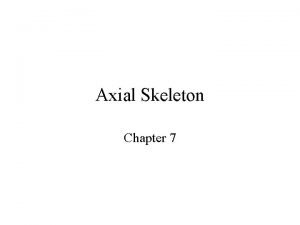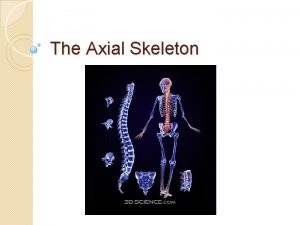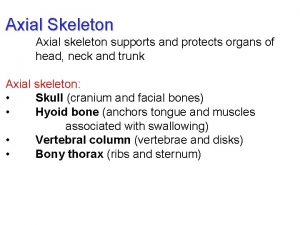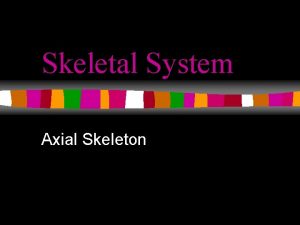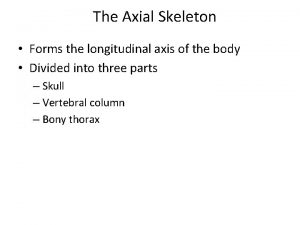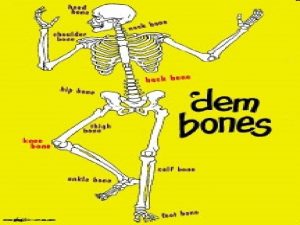The Axial Skeleton Forms the longitudinal part of












- Slides: 12

The Axial Skeleton Forms the longitudinal part of the body Divided into three parts Skull Vertebral column Bony thorax Copyright © 2003 Pearson Education, Inc. publishing as Benjamin Cummings Slide 5. 20 a

The Skull Two sets of bones Cranium Facial bones Bones are joined by sutures Only the mandible is attached by a freely movable joint Copyright © 2003 Pearson Education, Inc. publishing as Benjamin Cummings Slide 5. 21 a

The Skull Figure 5. 7 Copyright © 2003 Pearson Education, Inc. publishing as Benjamin Cummings Slide 5. 21 b

Bones of the Skull Figure 5. 11 Copyright © 2003 Pearson Education, Inc. publishing as Benjamin Cummings Slide 5. 22

The Hyoid Bone The only bone that does not articulate with another bone Serves as a moveable base for the tongue Figure 5. 12 Copyright © 2003 Pearson Education, Inc. publishing as Benjamin Cummings Slide 5. 26

The Fetal Skull The fetal skull is large compared to the infants total body length Figure 5. 13 Copyright © 2003 Pearson Education, Inc. publishing as Benjamin Cummings Slide 5. 27 a

The Fetal Skull Fontanelles – fibrous membranes connecting the cranial bones Allow the brain to grow Convert to bone within 24 months after birth Figure 5. 13 Copyright © 2003 Pearson Education, Inc. publishing as Benjamin Cummings Slide 5. 27 b

The Vertebral Column Vertebrae separated by intervertebral discs The spine has a normal curvature Each vertebrae is given a name according to its location Figure 5. 14 Copyright © 2003 Pearson Education, Inc. publishing as Benjamin Cummings Slide 5. 28

Cervical Vertebrae C 1 and C 2 Cervical vertebrae C 1 is also called atlas After the Greek God Who was punished by Zeus to hold up the Heavens on his shoulders Cervical vertebrae C 2 is also called the Axis as it has a small bone that the atlas spins on Figure 5. 16 Copyright © 2003 Pearson Education, Inc. publishing as Benjamin Cummings Slide 5. 29


The Bony Thorax Forms a cage to protect major organs Figure 5. 19 a Copyright © 2003 Pearson Education, Inc. publishing as Benjamin Cummings Slide 5. 31 a

The Bony Thorax Made-up of three parts Sternum Ribs Thoracic vertebrae Figure 5. 19 a Copyright © 2003 Pearson Education, Inc. publishing as Benjamin Cummings Slide 5. 31 b
 Figure 5-13 is a diagram of the articulated skeleton
Figure 5-13 is a diagram of the articulated skeleton Xiphosternal joint
Xiphosternal joint Axial vs appendicular
Axial vs appendicular Axial skeleton vs appendicular
Axial skeleton vs appendicular 5 functions of skeletal system
5 functions of skeletal system Figure 6-2 structure of a typical bone
Figure 6-2 structure of a typical bone Axial skeleton
Axial skeleton Chapter 5 the skeletal system figure 5-13
Chapter 5 the skeletal system figure 5-13 Figure 6-4 the skeleton axial and appendicular divisions
Figure 6-4 the skeleton axial and appendicular divisions Concept map on vertebrates
Concept map on vertebrates Bone remodeling
Bone remodeling Axial skeleton
Axial skeleton 7 12 5 spine
7 12 5 spine
